http://www.wikipaintings.org/en/dante-gabriel-rossetti
Dante Gabriel Rossetti (12 May 1828 – 9 April 1882; English pronunciation: /ˈdænti ˈɡeɪbriəl rəˈzɛti/) was an English poet, illustrator, painter and translator. He founded the Pre-Raphaelite Brotherhood in 1848 with William Holman Hunt and John Everett Millais, and was later to be the main inspiration for a second generation of artists and writers influenced by the movement, most notably William Morris and Edward Burne-Jones. His work also influenced the European Symbolists and was a major precursor of the Aesthetic movement.
Rossetti&s art was characterised by its sensuality and its medieval revivalism. His early poetry was influenced by John Keats. His later poetry was characterised by the complex interlinking of thought and feeling, especially in his sonnet sequence The House of Life. Poetry and image are closely entwined in Rossetti&s work; he frequently wrote sonnets to accompany his pictures, spanning from The Girlhood of Mary Virgin (1849) and Astarte Syriaca (1877), while also creating art to illustrate poems such as Goblin Market by the celebrated poet Christina Rossetti, his sister.
Rossetti&s personal life was closely linked to his work, especially his relationships with his models and muses Elizabeth Siddal, Fanny Cornforth, and Jane Morris.
Early life
The son of émigré Italian scholar Gabriele Pasquale Giuseppe Rossetti and his wife Frances Polidori, Rossetti was born in London, and named Gabriel Charles Dante Rossetti. His family and friends called him Gabriel, but in publications he put the name Dante first (in honour of Dante Alighieri). He was the brother of poet Christina Rossetti, critic William Michael Rossetti, and author Maria Francesca Rossetti.
The young Rossetti is described as "self-possessed, articulate, passionate and charismatic" but also "ardent, poetic and feckless". Like all his siblings, he aspired to be a poet and attended King&s College School, in its original location near the Strand. He also wished to be a painter, having shown a great interest in Medieval Italian art. He studied at Henry Sass&s Drawing Academy from 1841 to 1845 when he enrolled at the Antique School of the Royal Academy, leaving in 1848. After leaving the Royal Academy, Rossetti studied under Ford Madox Brown, with whom he retained a close relationship throughout his life.
Following the exhibition of William Holman Hunt&s painting The Eve of St. Agnes, Rossetti sought out Hunt&s friendship. The painting illustrated a poem by the little-known John Keats. Rossetti&s own poem "The Blessed Damozel" was an imitation of Keats, and he believed Hunt might share his artistic and literary ideals. Together they developed the philosophy of the Pre-Raphaelite Brotherhood which they founded along with John Everett Millais.
The group&s intention was to reform English art by rejecting what they considered to be the mechanistic approach first adopted by the Mannerist artists who succeeded Raphael and Michelangelo and the formal training regime introduced by Sir Joshua Reynolds. Their approach was to return to the abundant detail, intense colours, and complex compositions of Quattrocento Italian and Flemish art. The eminent critic John Ruskin wrote:
Every Pre-Raphaelite landscape background is painted to the last touch, in the open air, from the thing itself. Every Pre-Raphaelite figure, however studied in expression, is a true portrait of some living person.
For the first issue of the brotherhood&s magazine, The Germ, published early in 1850, Rossetti contributed a poem "The Blessed Damozel" and a story about a fictional early Italian artist inspired by a vision of a woman who bids him combine the human and the divine in his art. Rossetti was always more interested in the medieval than in the modern side of the movement, working on translations of Dante and other medieval Italian poets, and adopting the stylistic characteristics of the early Italians.
Career
Beginnings
Rossetti&s first major paintings in oil display the realist qualities of the early Pre-Raphaelite movement. His Girlhood of Mary Virgin (1849) and Ecce Ancilla Domini (1850) portray Mary as a teenage girl. William Bell Scott saw Girlhood in progress in Hunt&s studio and remarked on young Rossetti&s technique :
He was painting in oils with water-colour brushes, as thinly as in water-colour, on canvas which he had primed with white till the surface was a smooth as cardboard, and every tint remained transparent. I saw at once that he was not an orthodox boy, but acting purely from the aesthetic motive. The mixture of genius and dilettantism of both men shut me up for the moment, and whetted my curiosity.
Stung by criticism of his second major painting, Ecce Ancilla Domini, exhibited in 1850, and the "increasingly hysterical critical reaction that greeted Pre-Raphaelitism" that year, Rossetti turned to watercolours, which could be sold privately. Although his work subsequently won support from John Ruskin, Rossetti only rarely exhibited thereafter.
Dante and Medievalism
In 1850, Rossetti met Elizabeth Siddal, an important model for the Pre-Raphaelite painters. Over the next decade, she became his muse, his pupil, and his passion. They were married in 1860.
Rossetti&s incomplete picture Found, begun in 1853 and unfinished at his death, was his only major modern-life subject. It depicted a prostitute, lifted from the street by a country drover who recognises his old sweetheart. However, Rossetti increasingly preferred symbolic and mythological images to realistic ones.
For many years, Rossetti worked on English translations of Italian poetry including Dante Alighieri&s La Vita Nuova (published as The Early Italian Poets in 1861). These and Sir Thomas Malory&s Le Morte d&Arthur inspired his art of the 1850s. He created a method of painting in watercolours, using thick pigments mixed with gum to give rich effects similar to medieval illuminations. He also developed a novel drawing technique in pen-and-ink. His first published illustration was "The Maids of Elfen-Mere" (1855), for a poem by his friend William Allingham, and he contributed two illustrations to Edward Moxon&s 1857 edition of Alfred, Lord Tennyson&s Poems and illustrations for works by his sister Christina Rossetti.
His visions of Arthurian romance and medieval design also inspired William Morris and Edward Burne-Jones. Neither Burne-Jones nor Morris knew Rossetti, but were much influenced by his works, and met him by recruiting him as a contributor to their Oxford and Cambridge Magazine which Morris founded in 1856 to promote his ideas about art and poetry.
In February 1857, Rossetti wrote to William Bell Scott:
Two young men, projectors of the Oxford and Cambridge Magazine, have recently come up to town from Oxford, and are now very intimate friends of mine. Their names are Morris and Jones. They have turned artists instead of taking up any other career to which the university generally leads, and both are men of real genius. Jones&s designs are marvels of finish and imaginative detail, unequalled by anything unless perhaps Albert Dürer&s finest works.
That summer Morris and Rossetti visited Oxford and finding the Oxford Union debating-hall under construction, pursued a commission to paint the upper walls with scenes from Le Morte d&Arthur and to decorate the roof between the open timbers. Seven artists were recruited, among them Valentine Prinsep and Arthur Hughes, and the work was hastily begun. The frescoes, done too soon and too fast, began to fade at once and now are barely decipherable. Rossetti recruited two sisters, Bessie and Jane Burden, as models for the Oxford Union murals, and Jane became Morris&s wife in 1859.
A new direction
Around 1860, Rossetti returned to oil painting, abandoning the dense medieval compositions of the 1850s in favour of powerful close-up images of women in flat pictorial spaces characterised by dense colour. These paintings became a major influence on the development of the European Symbolist movement. In them, Rossetti&s depiction of women became almost obsessively stylised. He portrayed his new lover Fanny Cornforth as the epitome of physical eroticism, whilst Jane Burden, the wife of his business partner William Morris, was glamorised as an ethereal goddess. "As in Rossetti&s previous reforms, the new kind of subject appeared in the context of a wholesale reconfiguration of the practice of painting, from the most basic level of materials and techniques up to the most abstract or conceptual level of the meanings and ideas that can be embodied in visual form." These new works were based not on medievalism, but on the Italian High Renaissance artists of Venice, Titian and Veronese.
In 1861, Rossetti became a founding partner in the decorative arts firm, Morris, Marshall, Faulkner & Co. with Morris, Burne-Jones, Ford Madox Brown, Philip Webb, Charles Faulkner and Peter Paul Marshall. Rossetti contributed designs for stained glass and other decorative objects.
Rossetti&s wife Elizabeth Siddal died of an overdose of laudanum in 1862, shortly after giving birth to a stillborn child. Rossetti became increasingly depressed, and on the death of his beloved Lizzie, buried the bulk of his unpublished poems with her at Highgate Cemetery, though he later had them dug up. He idealised her image as Dante&s Beatrice in a number of paintings, such as Beata Beatrix.
Cheyne Walk years
After the death of his wife, Rossetti leased Tudor House at 16, Cheyne Walk, in Chelsea where he lived for 20 years surrounded by extravagant furnishings and a parade of exotic birds and animals. Rossetti was fascinated with wombats, asking friends to meet him at the "Wombat&s Lair" at the London Zoo in Regent&s Park, and spending hours there. In September 1869 he acquired the first of two pet wombats, which he named "Top". It was brought to the dinner table and allowed to sleep in the large centrepiece during meals. Rossetti&s fascination with exotic animals continued throughout his life, culminating in the purchase of a llama and a toucan which he dressed in a cowboy hat and was trained to ride the llama round the dining table for his amusement.
Rossetti maintained Fanny Cornforth (described delicately by William Allington as Rossetti&s "housekeeper") in her own establishment nearby in Chelsea, and painted many voluptuous images of her between 1863 and 1865.
In 1865 he discovered auburn-haired Alexa Wilding, a dressmaker and would-be actress who was engaged to model for him on a full-time basis and sat for The Blessed Damozel and other paintings. She sat for more of his finished works than any other model, but comparatively little is known about her due to the lack of any romantic connection with Rossetti. He spotted her one evening in the Strand in 1865 and was immediately struck by her beauty. She agreed to sit for him the following day, but failed to arrive. He spotted her again weeks later, jumped from the cab he was in and persuaded her to go straight to his studio. He paid her a weekly fee to sit for him exclusively, afraid that other artists might employ her. They shared a lasting bond; after Rossetti&s death Wilding was said to have travelled regularly to place a wreath on his grave.
Jane Morris, whom Rossetti had used as a model for the Oxford Union murals he painted with William Morris and Edward Burne-Jones in 1857, also sat for him during these years, she "consumed and obsessed him in paint, poetry, and life". In 1869, Morris and Rossetti rented a country house, Kelmscott Manor at Kelmscott, Oxfordshire, as a summer home, but it became a retreat for Rossetti and Jane Morris to have a long-lasting and complicated liaison. They spent summers there with the Morris&s children, while Morris travelled to Iceland in 1871 and 1873.
During these years, Rossetti was prevailed upon by friends, in particular Charles Augustus Howell, to exhume his poems from his wife&s grave which he did, collating and publishing them in 1870 in the volume Poems by D. G. Rossetti. They created controversy when they were attacked as the epitome of the "fleshly school of poetry". Their eroticism and sensuality caused offence. One poem, "Nuptial Sleep", described a couple falling asleep after sex. It was part of Rossetti&s sonnet sequence The House of Life, a complex series of poems tracing the physical and spiritual development of an intimate relationship. Rossetti described the sonnet form as a "moment&s monument", implying that it sought to contain the feelings of a fleeting moment, and reflect on their meaning. The House of Life was a series of interacting monuments to these moments – an elaborate whole made from a mosaic of intensely described fragments. It was Rossetti&s most substantial literary achievement. In 1881, Rossetti published a second volume of poems, Ballads and Sonnets, which included the remaining sonnets from The House of Life sequence.
Decline and death
The savage reaction of critics to Rossetti&s first collection of poetry contributed to a mental breakdown in June 1872, and although he joined Jane at Kelmscott that September, he "spent his days in a haze of chloral and whisky". The next summer he was much improved, and both Alexa Wilding and Jane Morris sat for him at Kelmscott, where he created a soulful series of dream-like portraits. In 1874, Morris reorganised his decorative arts firm, cutting Rossetti out of the business, and the polite fiction that both men were in residence with Jane at Kelmscott could not be maintained. Rossetti abruptly left Kelmscott in July 1874 and never returned. Toward the end of his life, he sank into a morbid state, darkened by his drug addiction to chloral hydrate and increasing mental instability. He spent his last years as a recluse at Cheyne Walk.
On Easter Sunday, 1882, he died at the country house of a friend, where he had gone in a vain attempt to recover his health, which had been destroyed by chloral as his wife&s had been destroyed by laudanum. He died of &Brights Disease&, a disease of the kidneys from which he had been suffering for some time. He is buried at Birchington-on-Sea, Kent, England. His grave is visited by admirers of his life&s work and achievements as seen by fresh flowers placed there regularly.
Collections and critical assessment
Tate Britain, Birmingham, Manchester and Salford Museum and Art Galleries all contain large collections of Rossetti&s work; the latter was bequeathed a number of works following the death of L.S. Lowry in 1976. Lowry was president of the Newcastle-based &Rossetti Society&, which was founded in 1966. Lowry&s private collection of works was chiefly built around Rossetti&s paintings and sketches of Lizzie Siddal and Jane Morris, and notable pieces included Pandora, Proserpine and a drawing of Annie Miller. In an interview with Mervyn Levy, Lowry explained his fascination with the Rossetti women in relation to his own work: "I don&t like his women at all, but they fascinate me, like a snake. That&s why I always buy Rossetti whenever I can. His women are really rather horrible. It&s like a friend of mine who says he hates my work, although it fascinates him." The friend Lowry referred to was businessman Monty Bloom, to whom he also explained his obsession with Rossetti&s portraits: "They are not real women [...] They are dreams [...] He used them for something in his mind caused by the death of his wife. I may be quite wrong there, but significantly they all came after the death of his wife."
The popularity, frequent reproduction, and general availability of Rossetti&s later paintings of women have led to this association with "a morbid and langourous sensuality". His small-scale early works and drawings are less well known, but it is in these that his originality, technical inventiveness, and significance in the movement away from Academic tradition can best be seen. As Roger Fry wrote in 1916, "Rossetti more than any other artist since Blake may be hailed as a forerunner of the new ideas" in English Art.
Media
Rossetti was played by Oliver Reed in Ken Russell&s television film Dante&s Inferno (1967). The Pre-Raphaelite Brotherhood has been the subject of two BBC period dramas. The first, The Love School, (1975) features Ben Kingsley as Rossetti. The second was Desperate Romantics, in which Rossetti is played by Aidan Turner. It was broadcast on BBC Two on Tuesday, 21 July 2009.
(1)The Annunciation, c.1849, Tate Britain, London, England, UK. Romanticism.
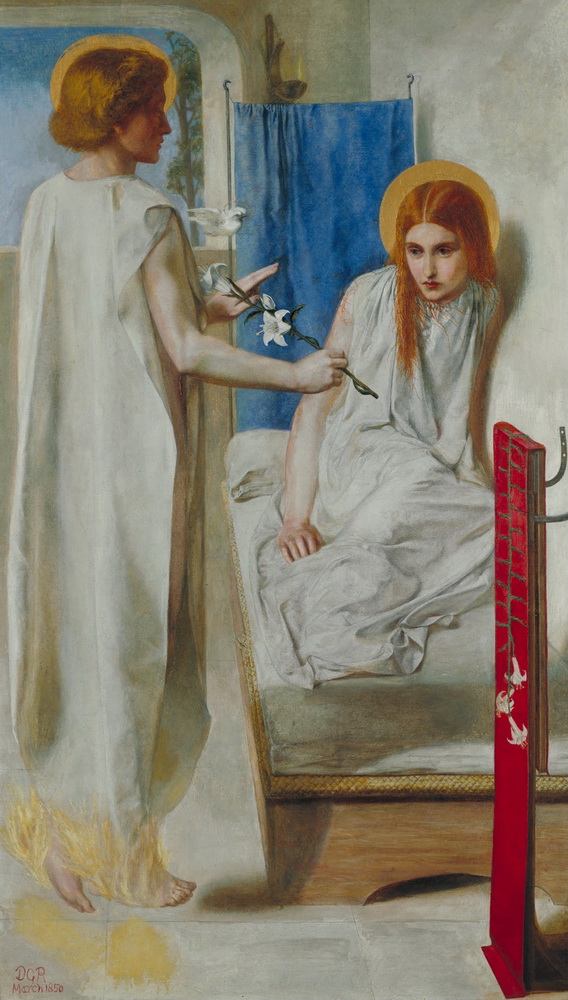
Original Size
(2)The Roman Widow, 1874, Museum of Art of Ponce. Romanticism.
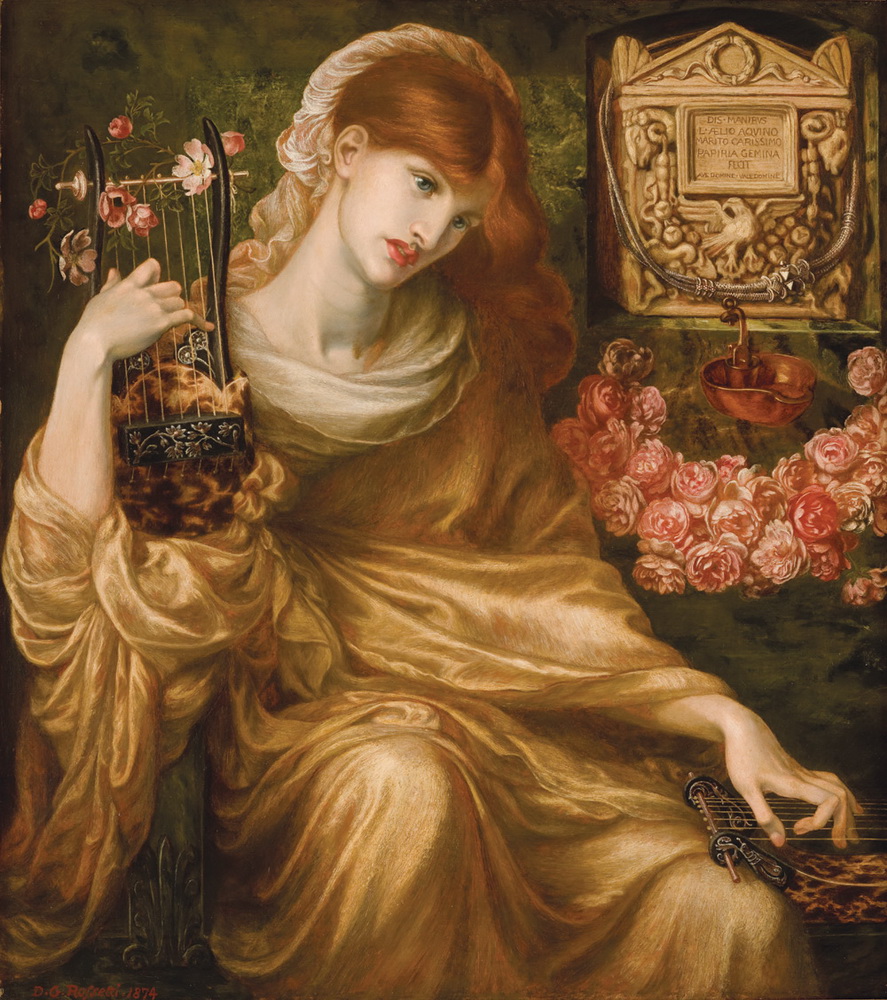
Original Size
(3)Proserpine, 1874, Tate Britain, London, England, UK. Romanticism.
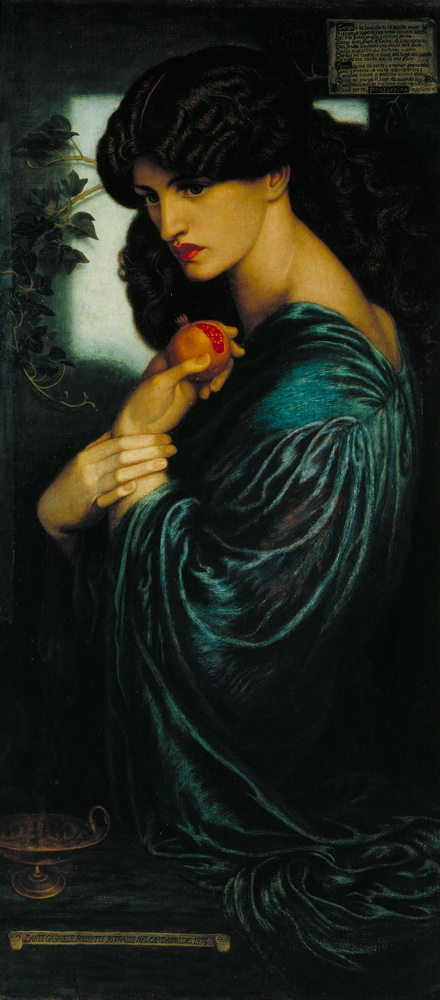
Original Size
(4)Lady Lilith, 1868, Delaware Art Museum. Romanticism.
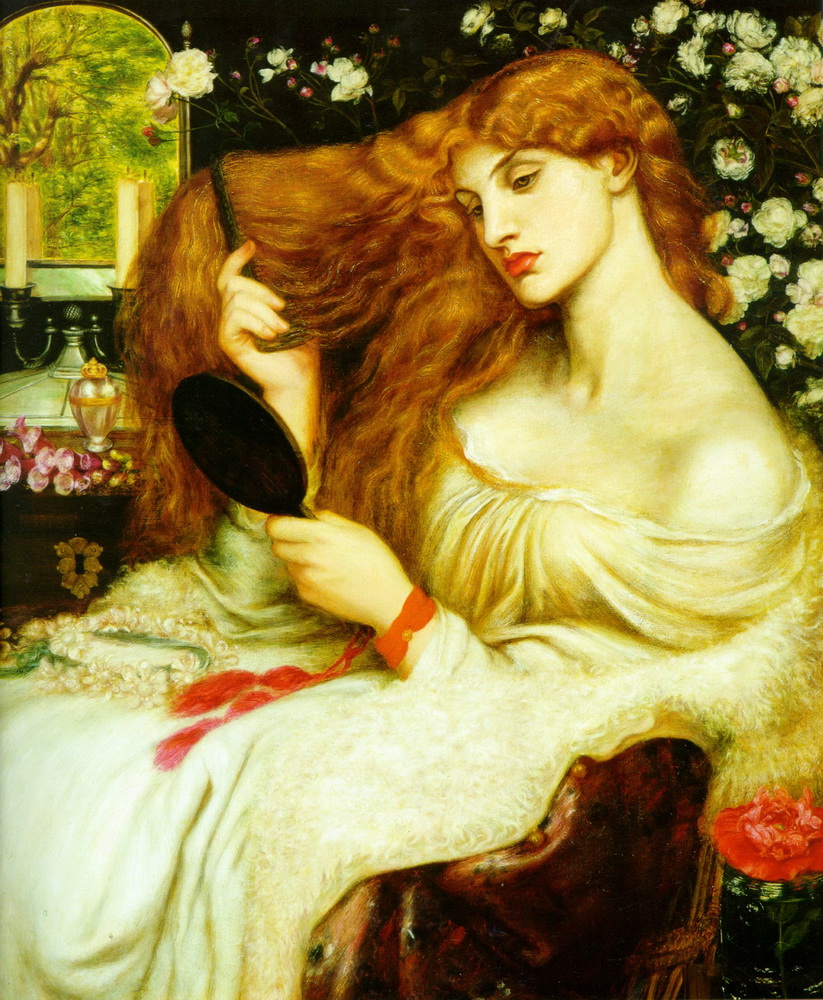
Original Size
(5)Veronica Veronese, 1872, Delaware Art Museum. Romanticism.
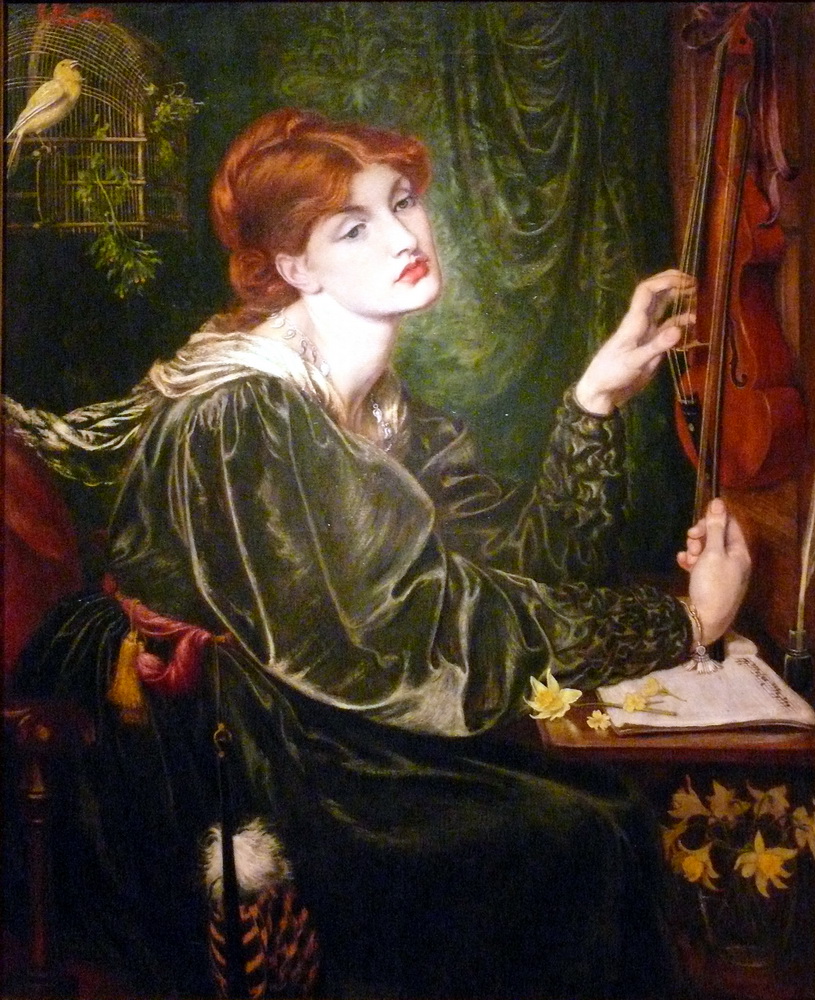
Original Size
(6)Sibylla Palmifera, Lady Lever Art Gallery, Port Sunlight, United Kingdom. Romanticism.
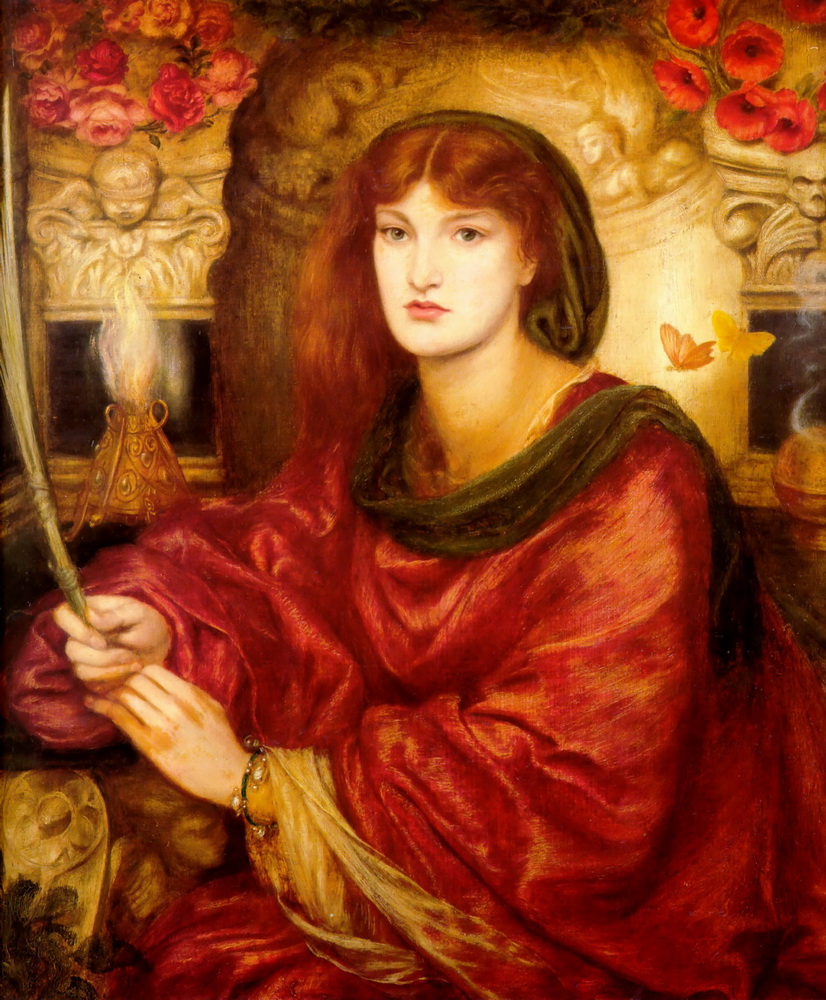
Original Size
(7)The Bower Meadow, 1872, City of Manchester Art Galleries, Manchester, UK. Romanticism.
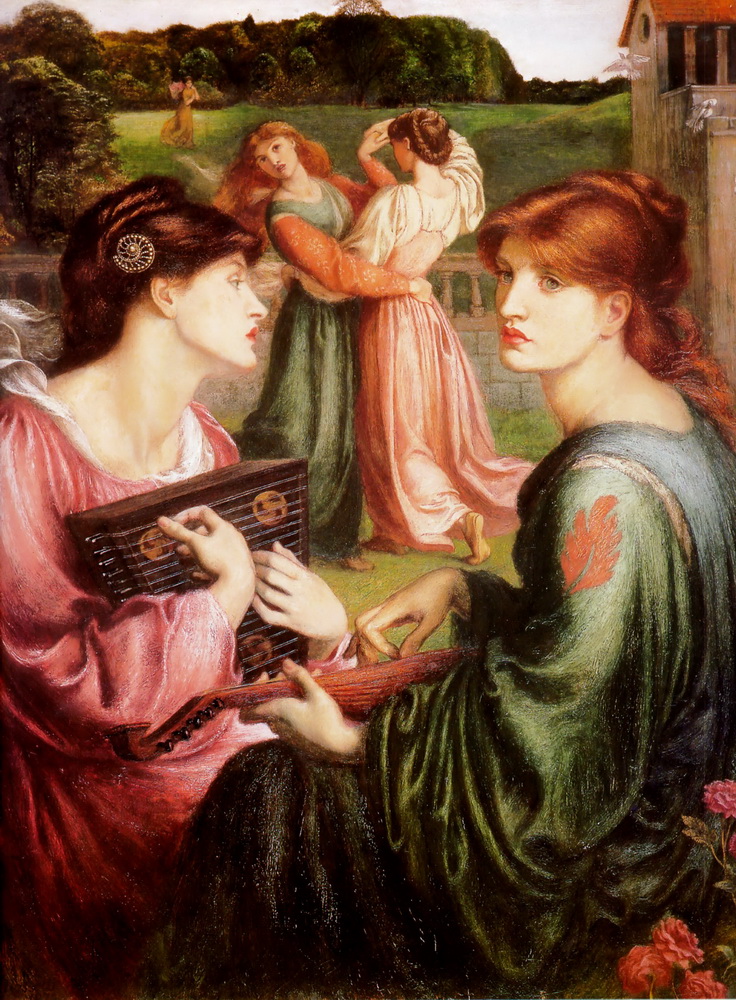
Original Size
(8)Water Willow, 1871, Delaware Art Museum. Romanticism.

(9)Sancta Lilias, 1874, Tate Gallery, London, UK. Romanticism.
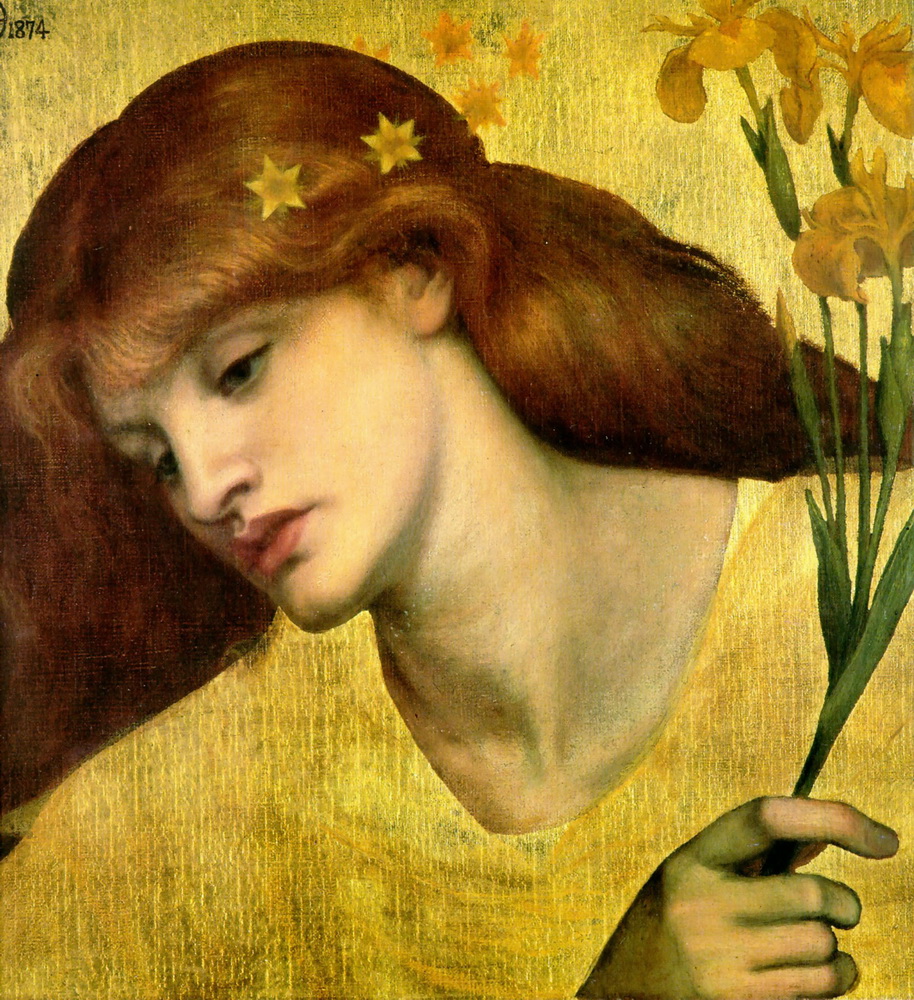
Original Size
(10)The Garland, Start Date: 1871, Completion Date: 1874, Guildhall Art Gallery. Romanticism.
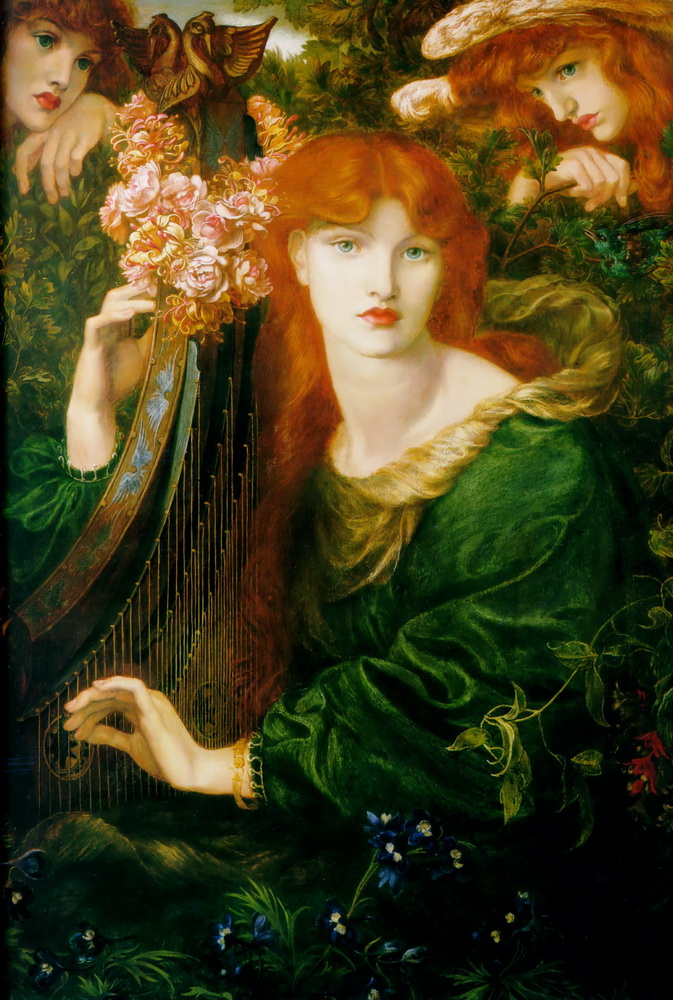
Original Size
(11)The beautiful Hand, Start Date: 1874, Completion Date:1875, Delaware Art Museum. Romanticism.
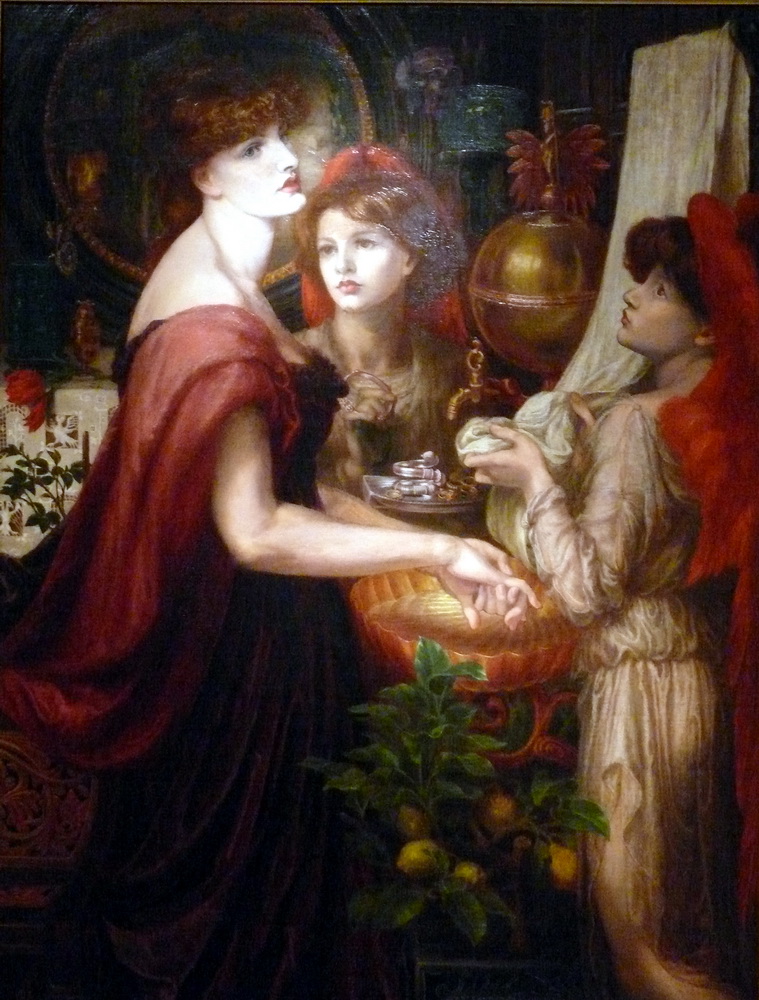
Original Size
(12)A Sea Spell, 1877, Fogg Art Museum, Cambridge, Massachusetts, USA. Romanticism.
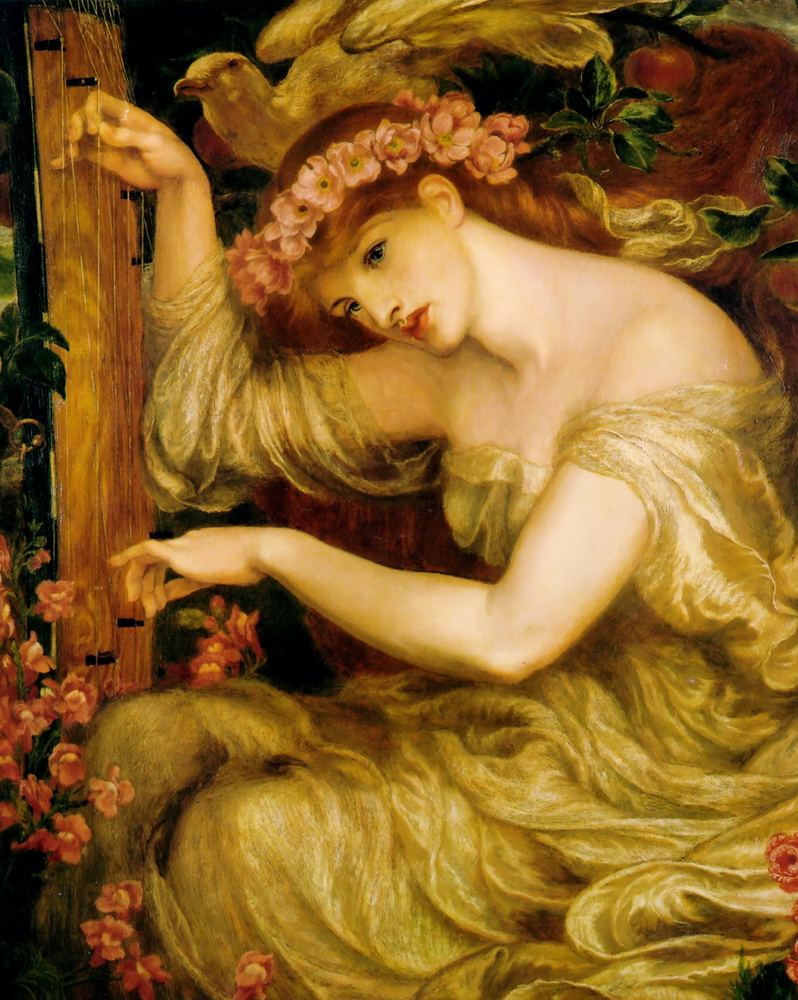
Original Size
(13)A Vision of Fiammetta, 1878. Private Collection. Romanticism.
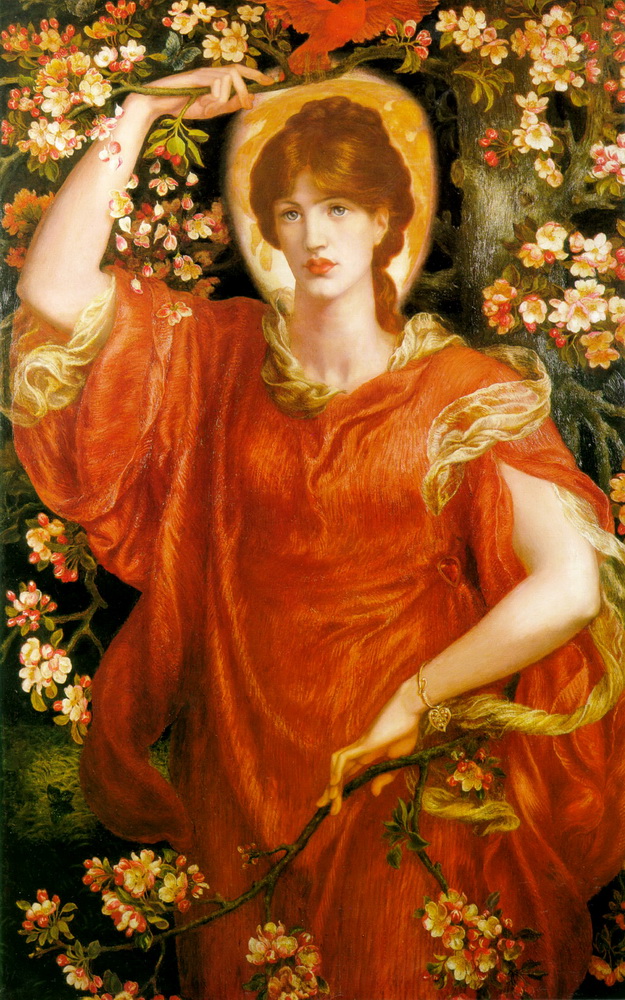
Original Size
(14)Astarte Syriaca, 1878, City of Manchester Art Galleries, Manchester, UK. Romanticism.
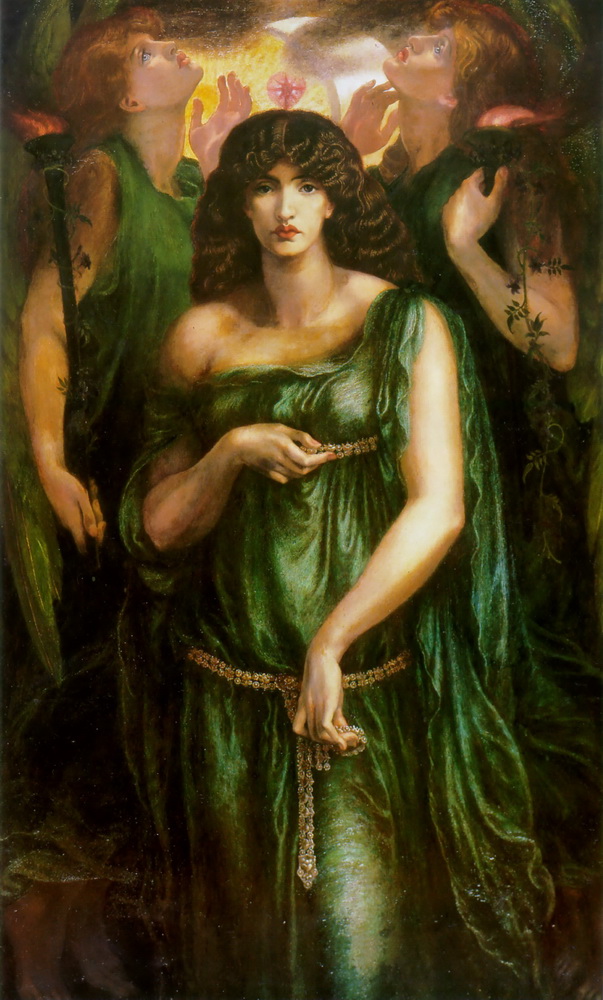
Original Size
(15)The Blessed Damozel, Start Date: 1875, Completion Date: 1878, Fogg Art Museum, Cambridge, Massachusetts, USA. Romanticism.
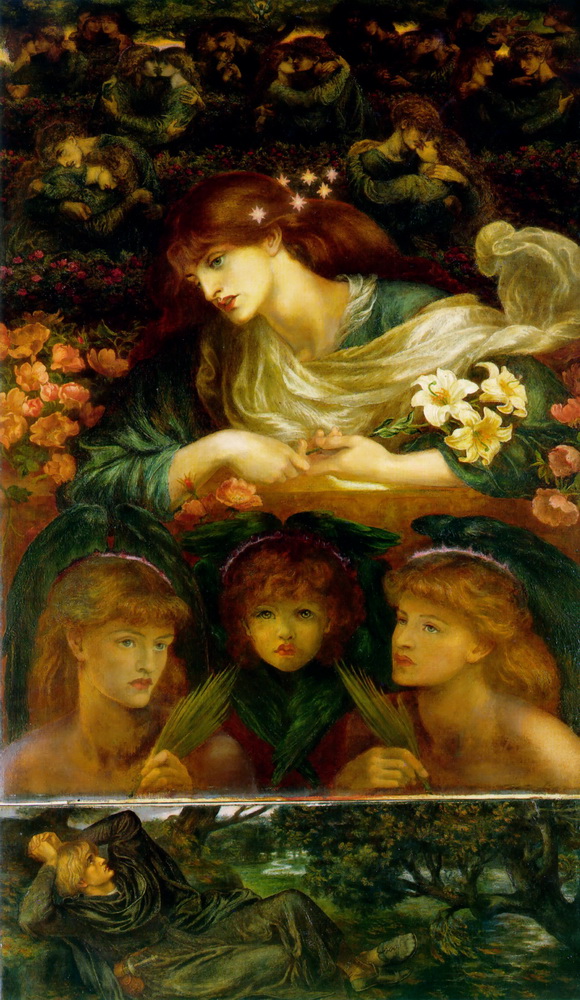
Original Size
(16)The Women&s Window, 1879, Fogg Art Museum, Cambridge, Massachusetts, USA. Romanticism.
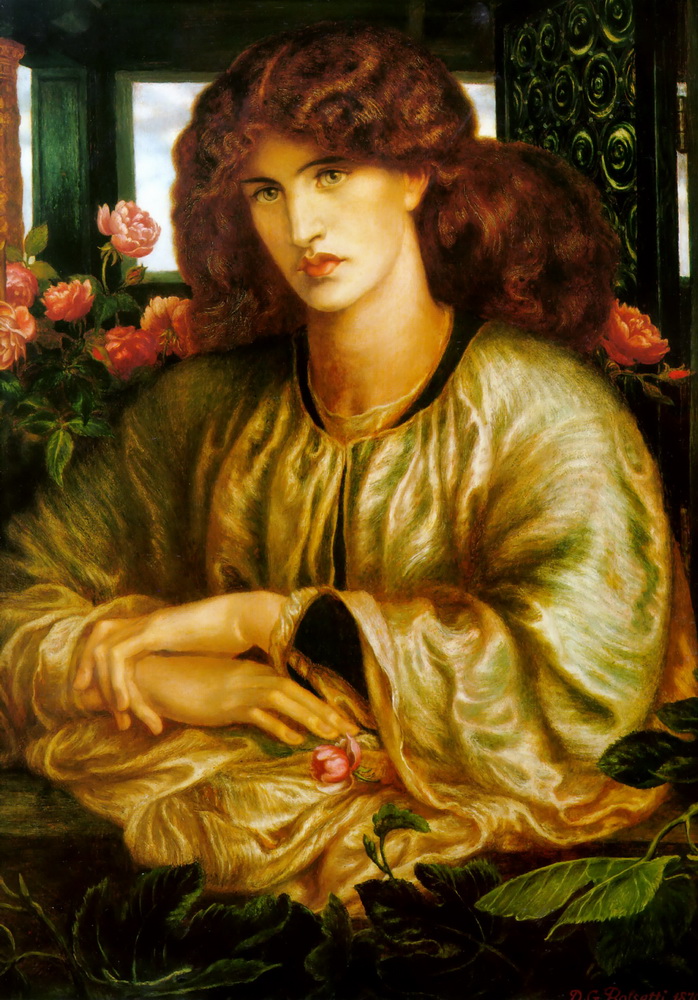
Original Size
(17)The Day Dream, 1880, Victoria and Albert Museum, London, UK. Romanticism.
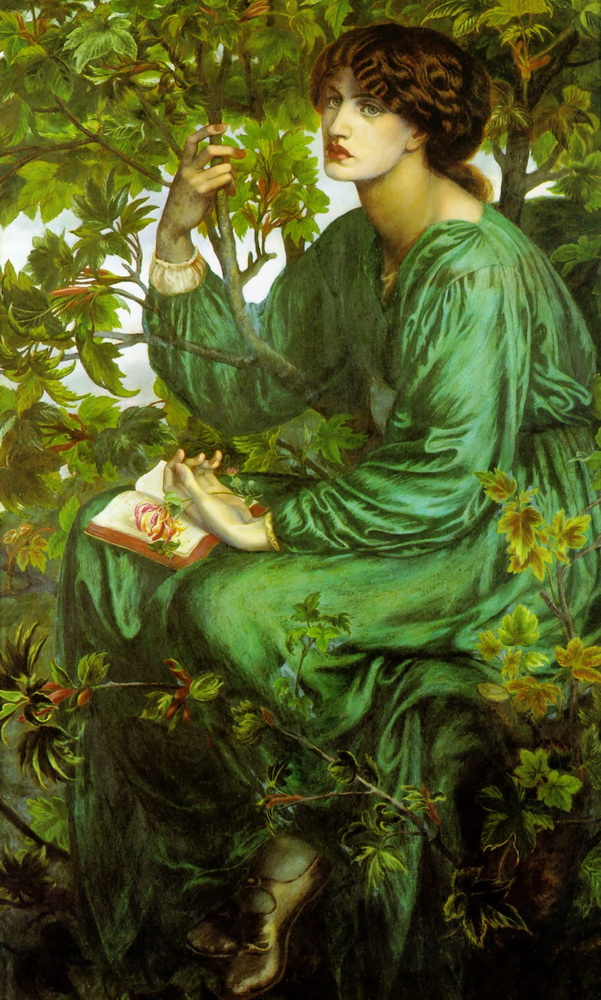
Original Size
(18)The Pia of Tolomei, Start Date: 1868, Completion Date:1880. Spencer Museum of Art, Kansas, USA. Romanticism.
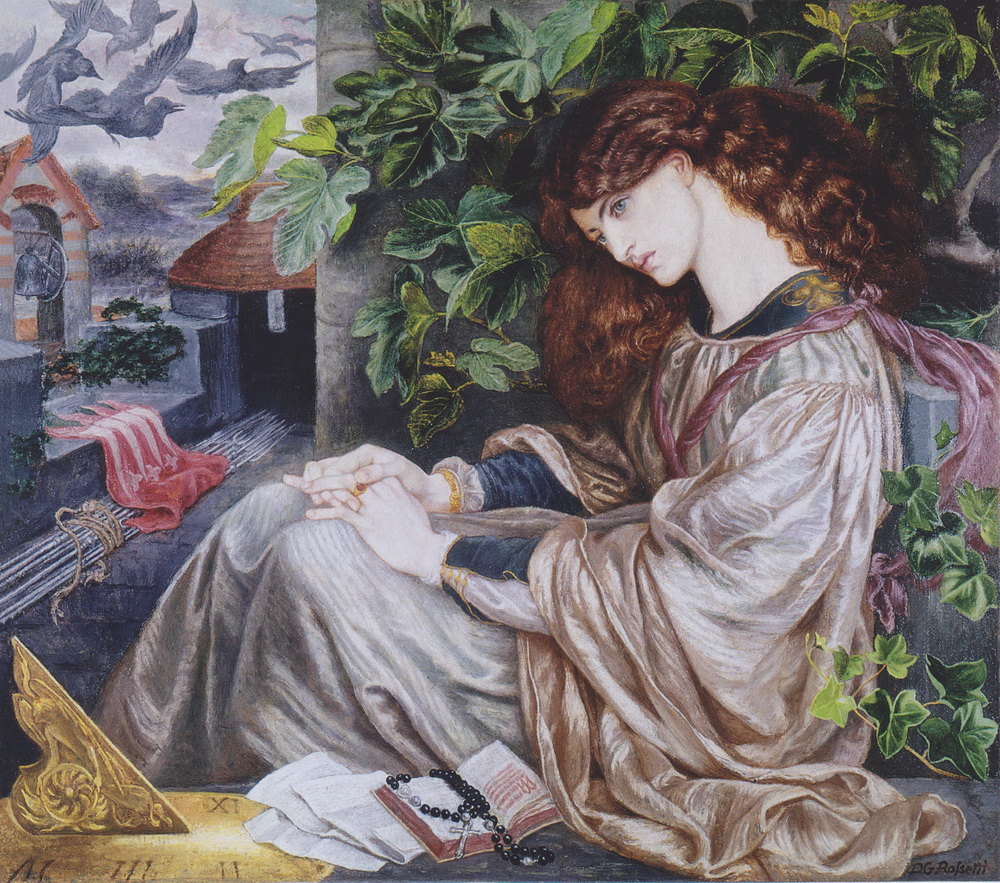
Original Size
(19)Mariana, 1870, Aberdeen Art Gallery, Aberdeen, Scotland, UK. Romanticism.

(20)Venus Verticordia, Start Date: 1864, Completion Date:1868. Russell Cotes Art Gallery and Museum. Romanticism.
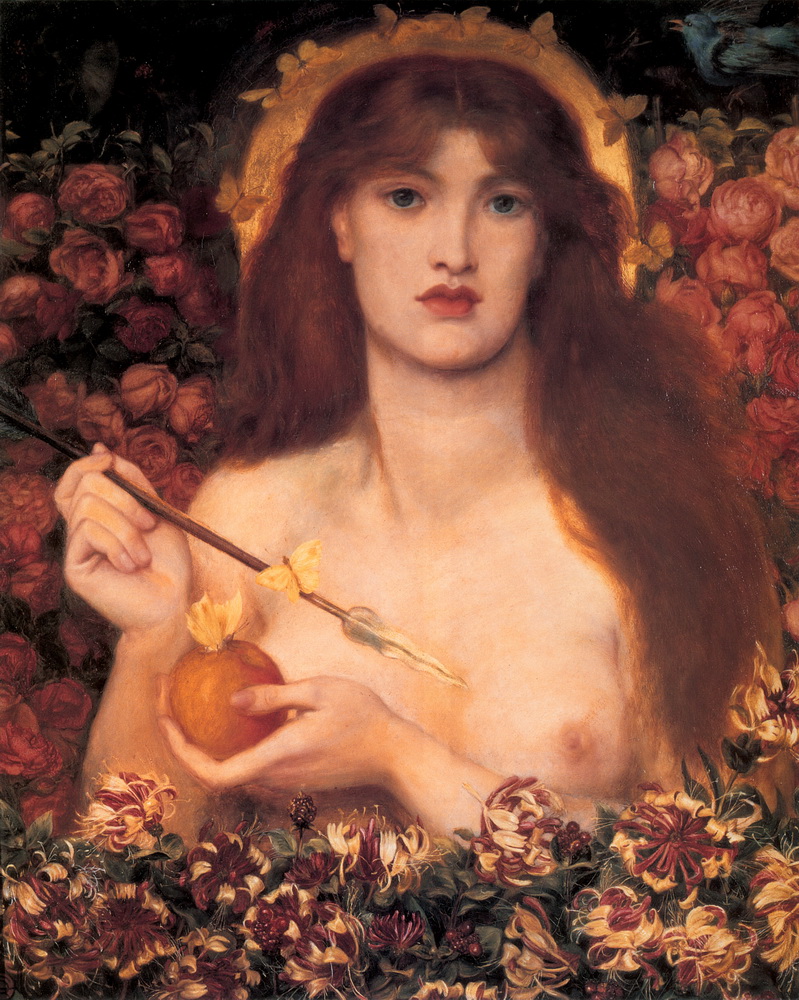
Original Size
(21)The Beloved, Start Date: 1865, Completion Date: 1866, Tate Gallery, London, UK. Romanticism.
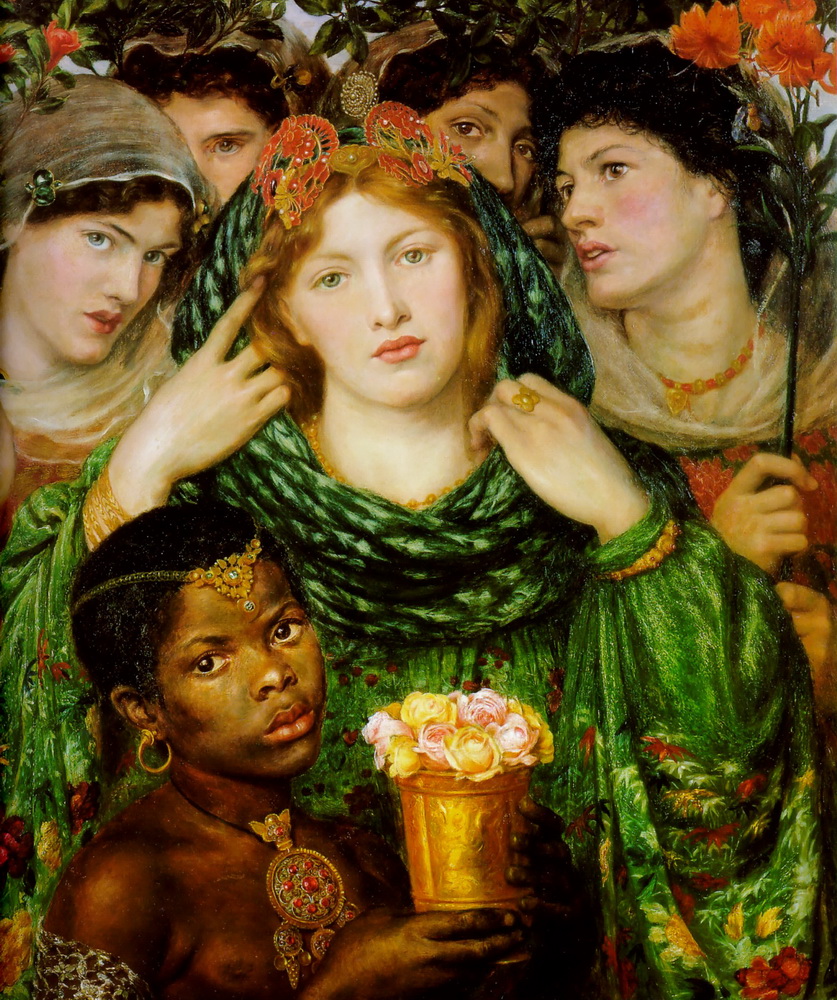
Original Size
(22)Monna Rosa, 1867, Private Collection. Romanticism.

(23)The loving cup, 1867, Art Gallery of South Australia, Adelaide, Australia. Romanticism.
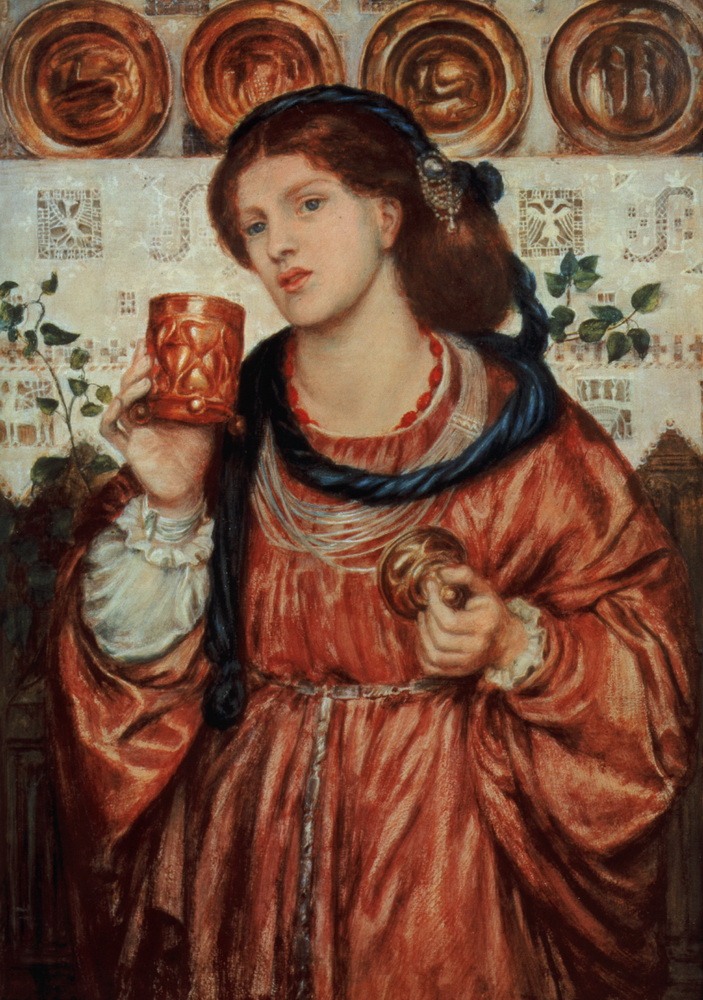
Original Size
(24)The wedding of Saint George and Princess Sabra, 1857, Tate Gallery, London, UK. Romanticism.
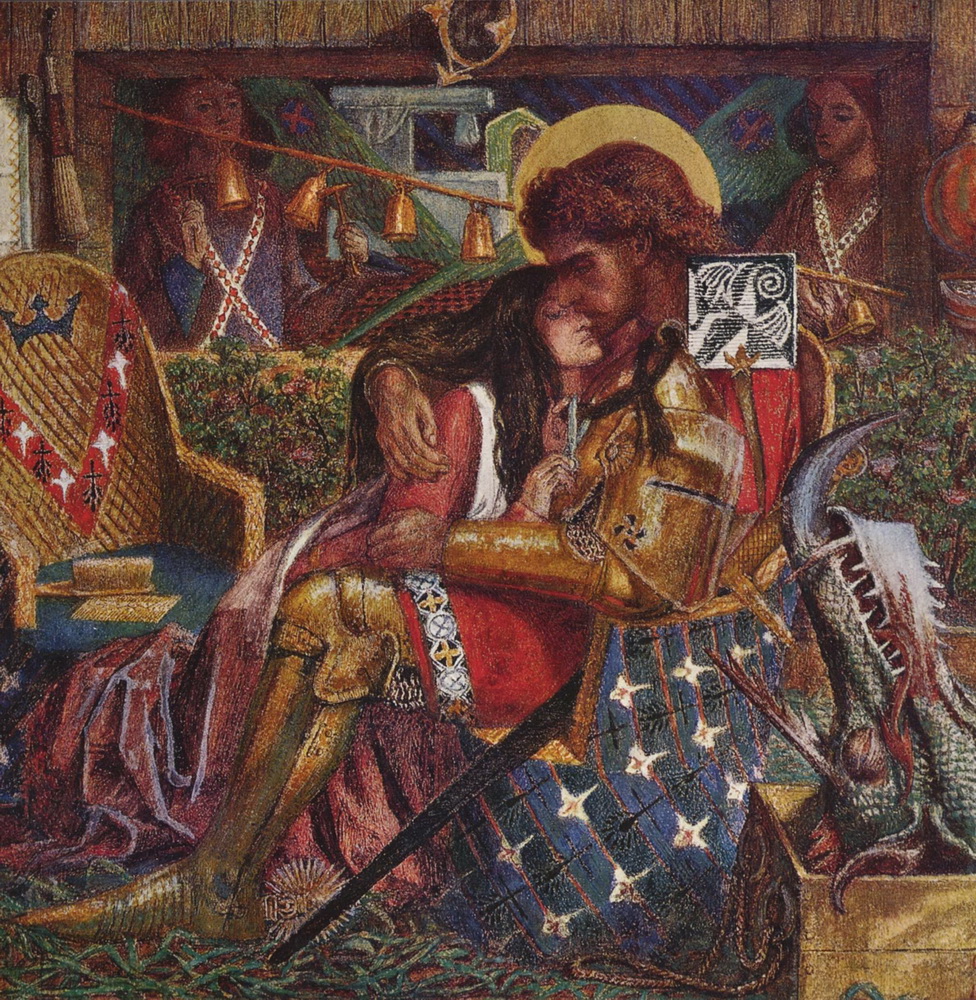
Original Size
(25)Before the Battle, 1858. Romanticism.
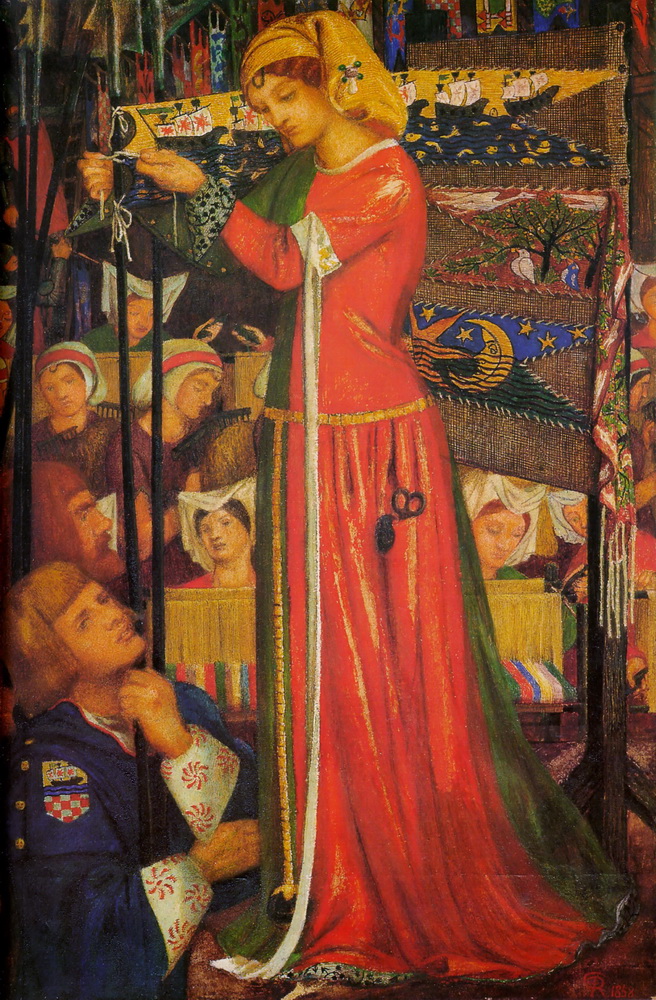
Original Size
(26)The Annunciation, c.1855, Private Collection. Romanticism.

(27)Found, 1854, Delaware Art Museum. Romanticism.
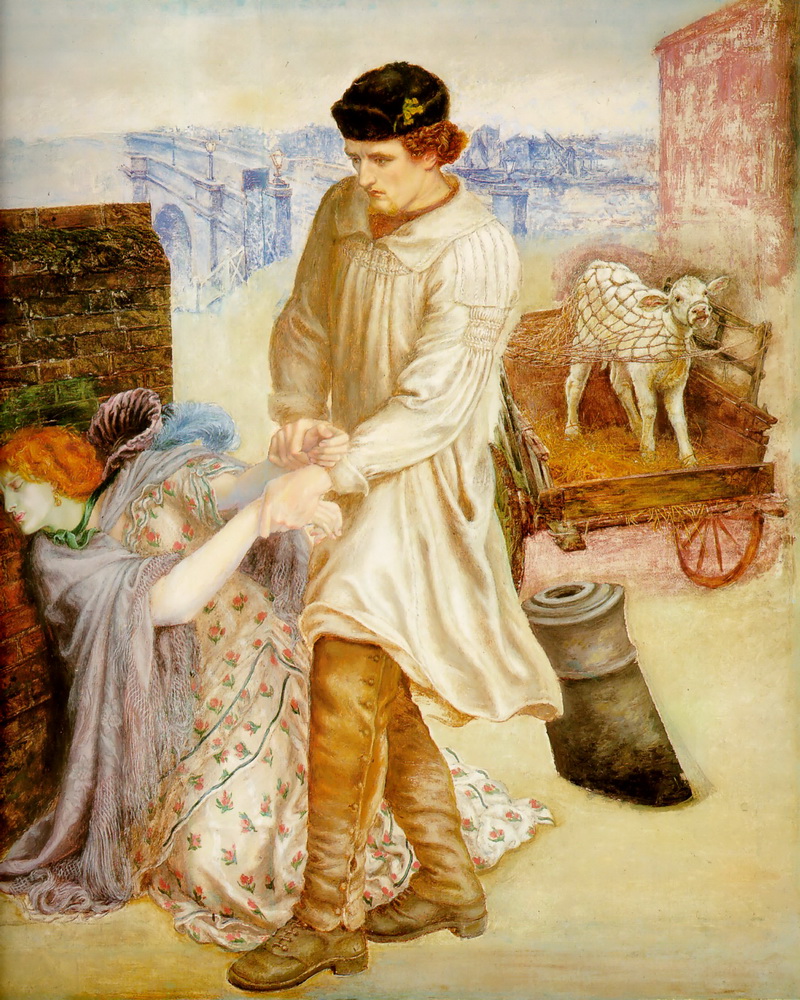
Original Size
(28)The Tune of the Seven Towers, 1857, Tate Gallery, London, UK. Romanticism.
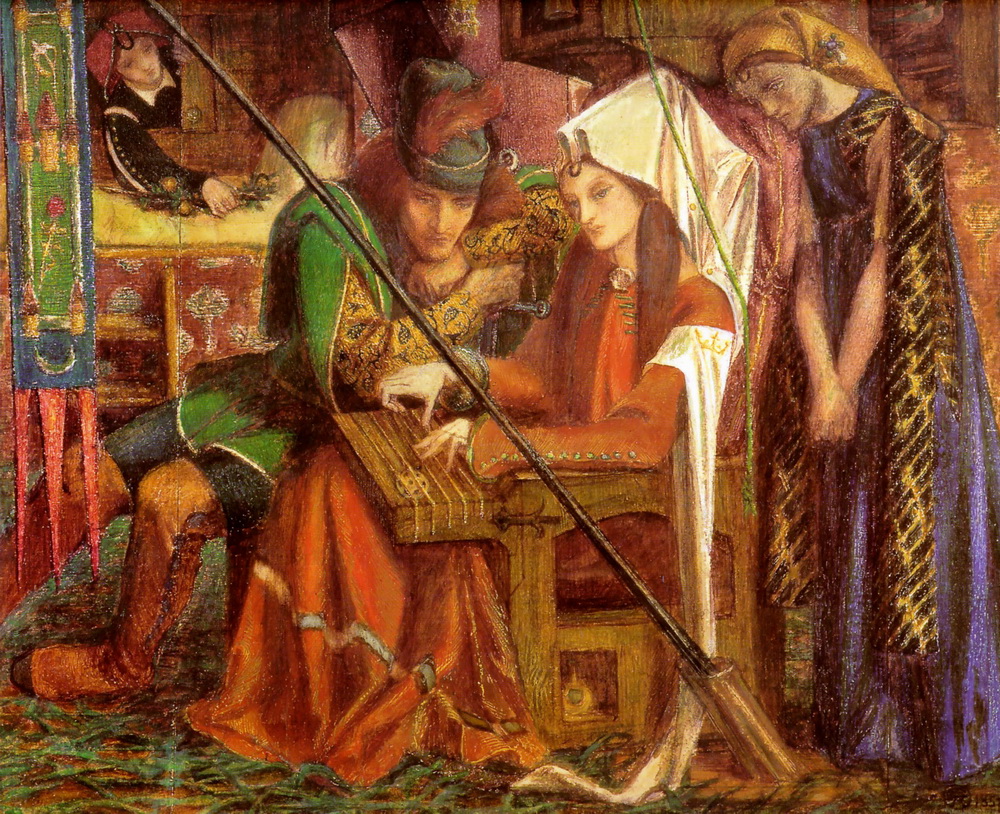
Original Size
(29)Helen of Troy, 1863, Hamburger Kunsthalle. Romanticism.
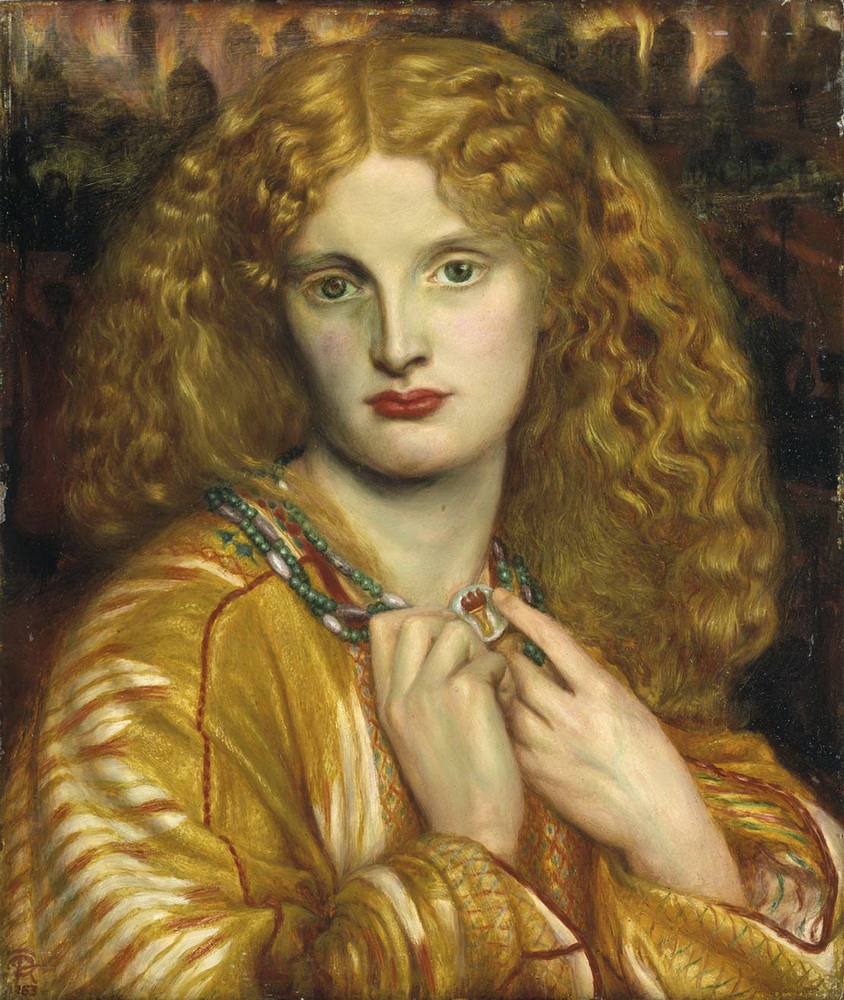
Original Size
(30)Joan of Arc Kisses the Sword of Liberation, 1863. Romanticism.
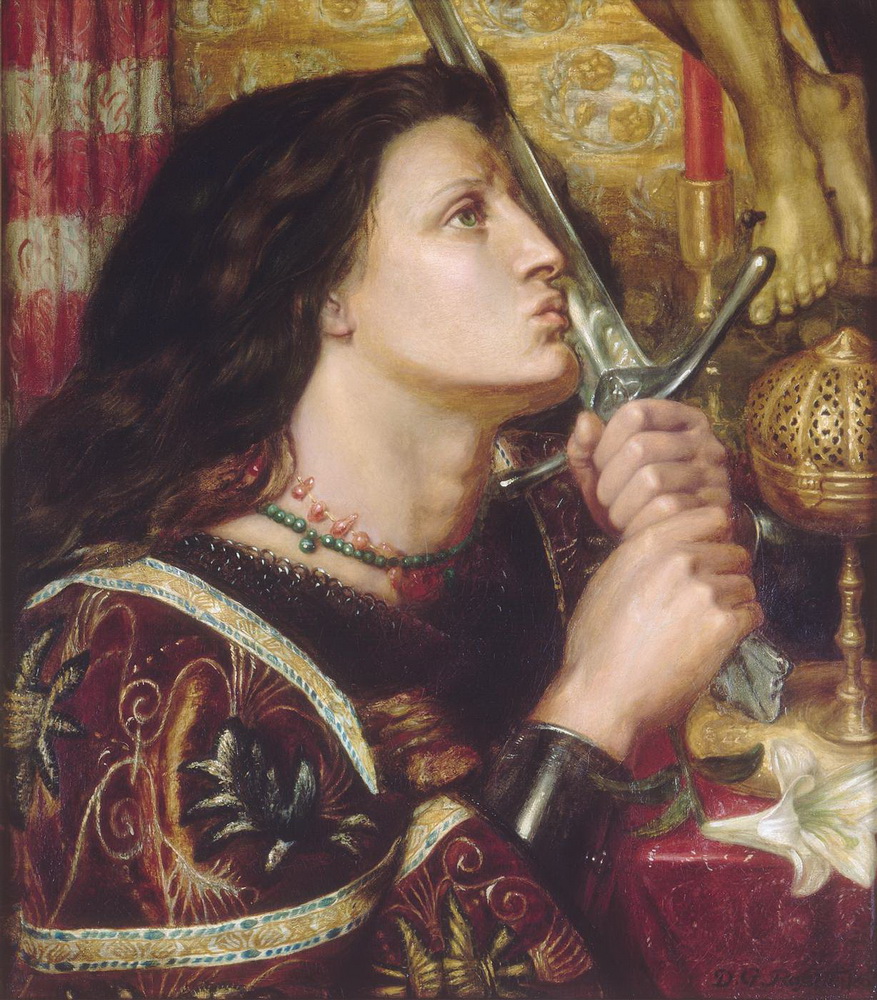
Original Size
(31)Morning music, 1864, Fitzwilliam Museum. Romanticism.
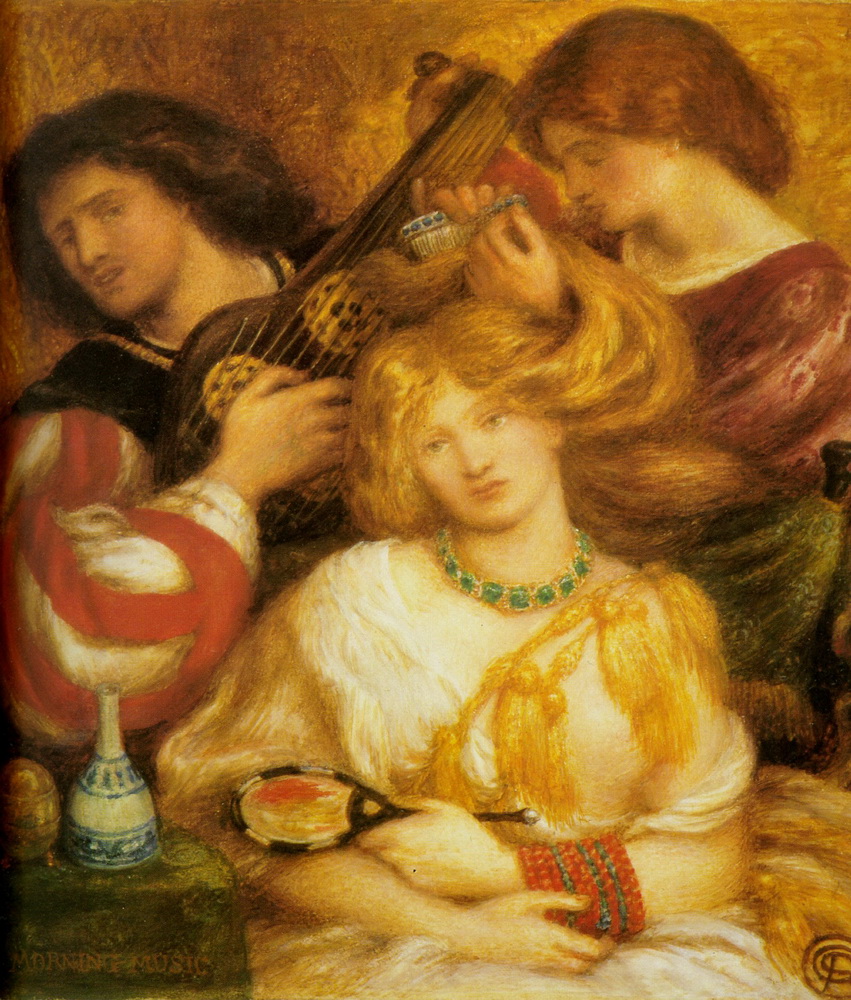
Original Size
(32)How Sir Galahad, Sir Bors and Sir Percival Were Fed with the Sanc Grael0 But Sir Percival0s Sister Died By the Way, 1864, Tate Gallery, London, UK. Romanticism.
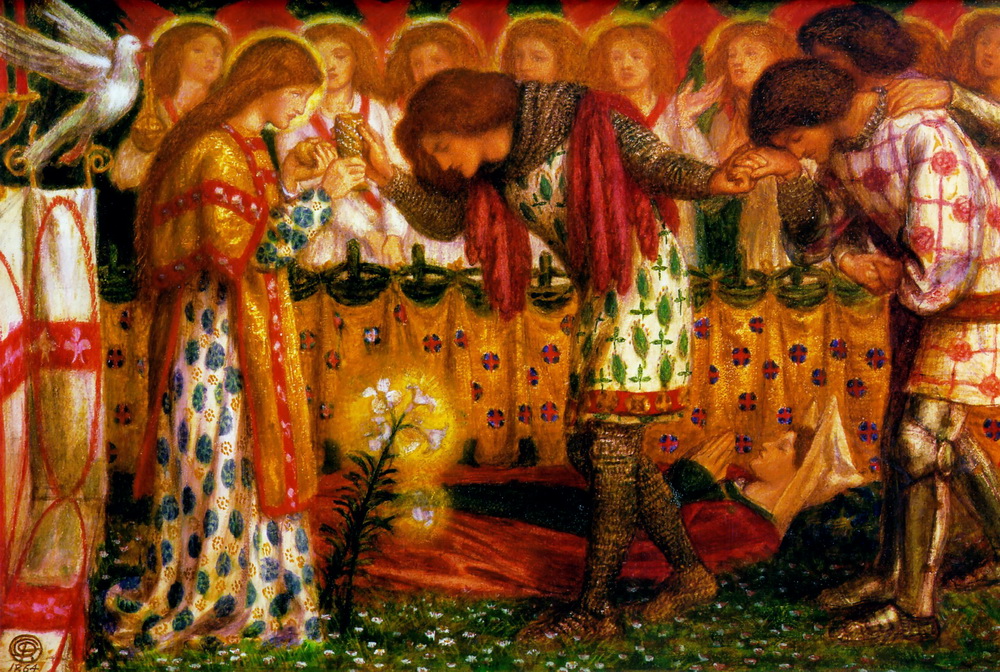
Original Size
(33)The Blue Closet, 1857, Tate Britain, London, England, UK. Romanticism.
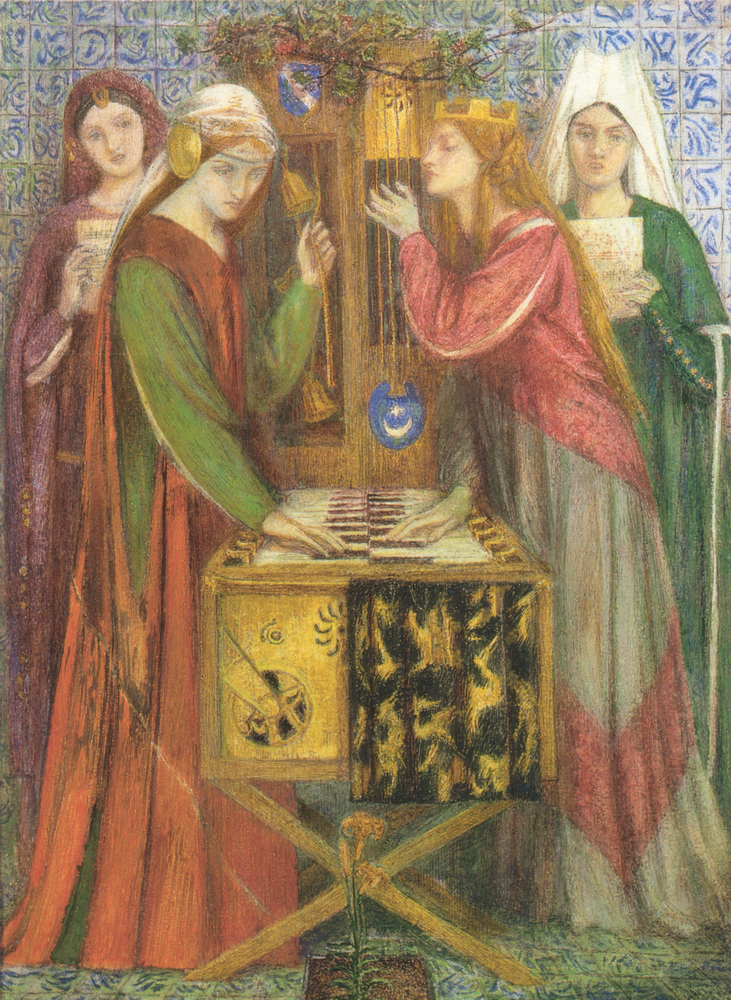
Original Size
(34)A Christmas Carol, 1857, Spencer Museum of Art, Kansas, USA. Romanticism.

(35)Saint George and the Princess Sabra, 1862, Tate Gallery, London, UK. Romanticism.
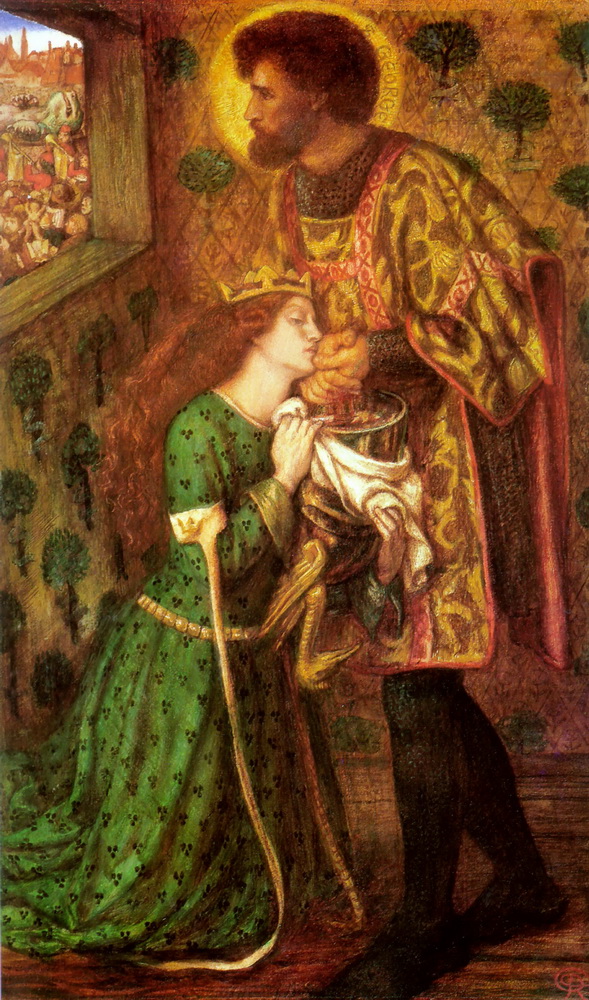
Original Size
(36)Dante&s Vision of Rachel and Leah, 1855, Tate Gallery, London, UK . Romanticism.

(37)Saint Catherine, 1857, Tate Britain, London, England, UK. Romanticism.

(38)Beatrice, Meeting Dante at a Wedding Feast, Denies him her Salutation, 1855, Ashmolean Museum, Oxford, UK. Romanticism.
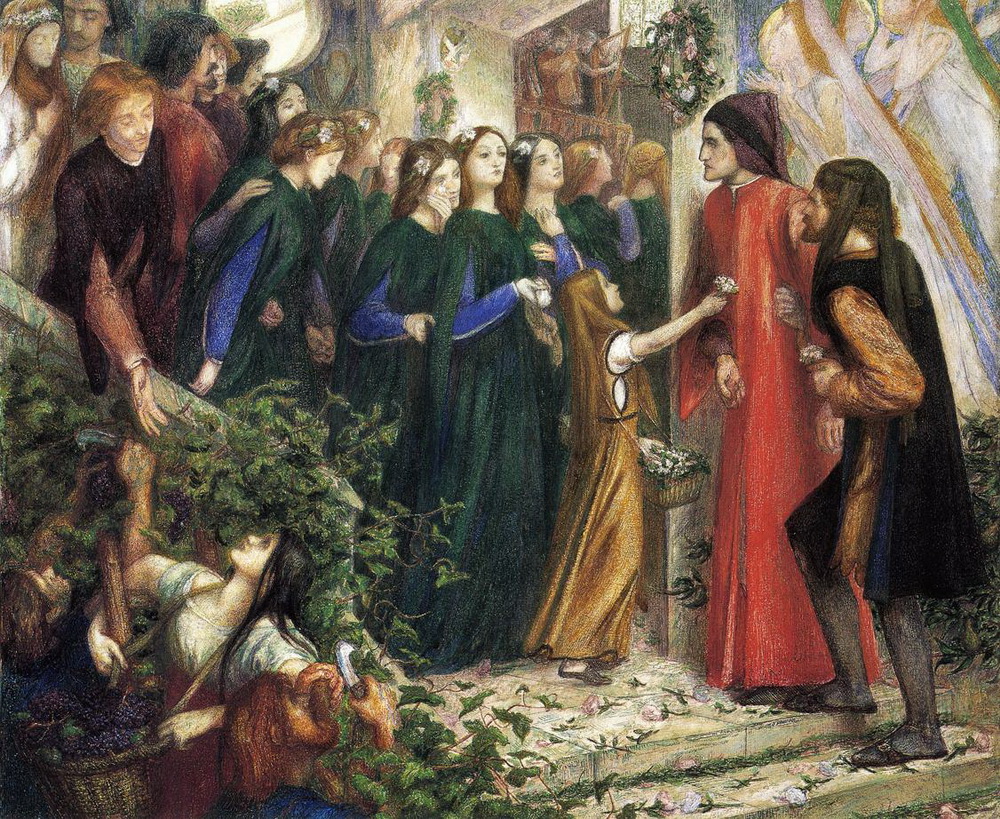
Original Size
(39)Arthur&s Tomb, 1855, Dallas Museum of Fine Arts, Dallas, Texas, USA. Romanticism.

(40)Writing on the Sand, 1859, Fitzwilliam Museum. Romanticism.



